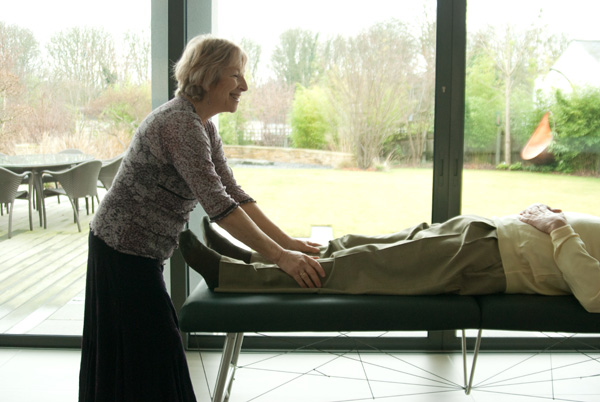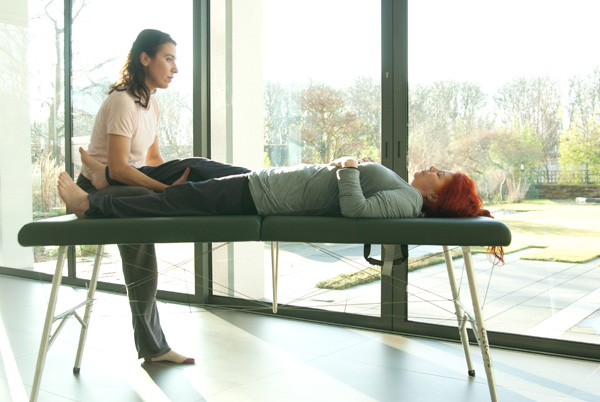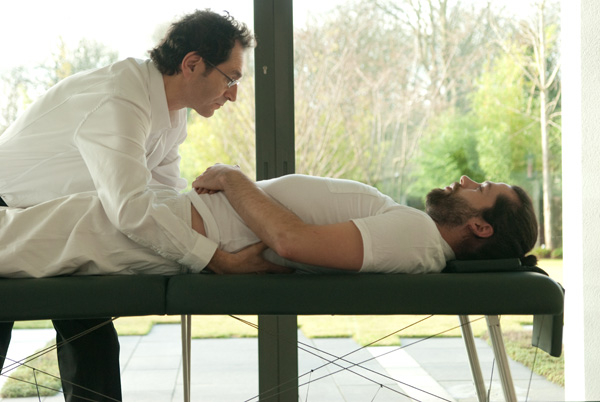Integrating Zero Balancing into Physical, Mental, Emotional and Spiritual Dimensions of Wellness (2021)
A Mixed-Method Pilot Study
Misty Rhoads Ph.D., LSH, CZB et al.
Background:
There is an unquestionable need for society to address the impacts of undue stress and explore accessible ways in which to restore and enhance human well-being. Yet, to date, the study of “wellness” has not included the role that skilled touch modalities, such as Zero Balancing, may play in supporting personal transformation and healing.
This study was designed to begin this process of enquiry, to explore “how is our well-being influenced by receiving conscious and transformative touch?”
Methodology:
To better understand and convey the complexity and richness of receiving “ZB Touch”, along with how this modality affects the dimensions of wellness, the researchers chose a convenient sample of 16 individuals to participate in this study, coupled with a concurrent mixed-methods phenomenological research design that combines qualitative and quantitative procedures for collecting and analysing data.
Discussion:
The data revealed some critical insights into how skilled touch benefits well-being, such as a sense of integration that itself promotes coherence and harmony within the body, which are key factors in determining human wellness. One of the other most intriguing themes of receiving ZB Touch was that all participants reported an “expanded state of consciousness”, this being a state outside mundane daily consciousness and characterized by a less linear, more spacious felt-sense of themselves.
Many of the participants noted how they became increasingly aware of their internal states of deep relaxation and commented on how this led to feeling more themselves and more comfortable with others. Self-awareness is integral to recovery and the ability to change (van der Kolk, 2014). In fact, Dr. van de Kolk, founder and director of the Trauma Center in Brookline, MA, encourages his patients to receive bodywork as “Touch is the most elementary tool we have to calm down” (van der Kolk, 2014), as receiving skilled touch supports an increase in interoception. This is the ability to sense connection to and awareness of self through our connective tissue responses and, therefore, has an impact on human consciousness. Within the human body, this makes touch a mediator between the body and mind (Schleip & Hager, 2012).
How does the ability to relax, feel connected to oneself and others happen? According to the Polyvagal theory of Stephen Porges, feeling safe and attended to are often the prerequisites in creating a strong therapeutic relationship (such as the reported synchrony between a client and practitioner in earlier ZB research). Such a relationship is commonly found to be necessary to release embodied trauma responses and restore resiliency to the body-mind relationship (Geller & Porges, 2014).
Safe touch, also called neuro-affective touch, is therapeutically and psychologically significant in that it supports a reorganization within the body to a higher order of dynamic balance (LaPierre, 2006). This visceral sense of safety allows positive changes through releasing held tension within the body-mind offering new, meaningful possibilities for personal health and relationships.



Researchers also noted the following benefits of ZB Touch:
- Increased energy
- Increased feeling of rest after sleeping
- Increased sense of “physical ease”
- Increased sense of relaxation
- Decreased sensations of tension and pain in the body
- Increased sense of mental clarity
- Improved sense of connection and clarity
- Increased ability to regulate emotions
- Increased sense of feeling more grounded and present
In understanding why Zero Balancing is such an integrative form of body-mind therapy, it is important to note that this modality uniquely focuses on bone and the skeletal system. Recent research on the importance of the skeletal tissue in metabolic function indicates that skeletal tissue plays a role in the stress response (Morris, as cited in Karsenty 2019). It has been proposed that the bone derived hormone, osteocalcin, facilitates a bony-vertebrate-specific endocrine mediation of the acute stress response (Berger et al., 2019). Piezoelectric current produced through stretch, compression and tension, and conducted via connective tissue, is directed through the body, moving energy from bone to bone, indirectly affecting cartilage, ligaments and soft tissue (Geggus, as cited in Denner 2009).
Results & Conclusions:
Based on the results of this study it can be concluded that Zero Balancing is an integrative, low cost, simply administered, holistic therapy with multiple benefits. It also suggests this form of bodywork, with its focus on skilled, conscious touch, facilitates positive benefits in key physical, emotional, mental, and spiritual dimensions of wellness.
Significant Participant Statements
Relaxation
“I don’t think I have ever been this relaxed.”
Decreased Stress
“ZB just helps me handle stress.’
Ease of Movement
“More awareness of my entire body.”
Emotional Regulation
“I don’t overreact as much.”
Mental Clarity and Focus
“I feel mentally uncluttered.”
Personal Development
“I am more joyful and appreciative of the small moments.”
Body Awareness
“My bones feel electrified and my whole skeletal structure seems lengthened.”

